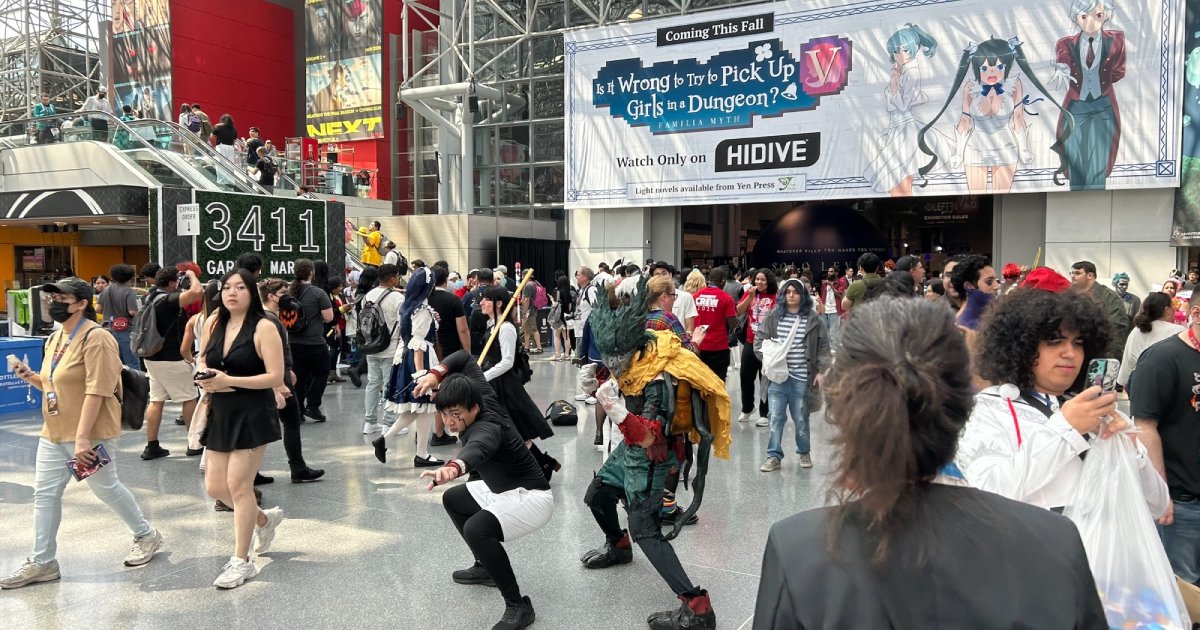Avoiding Anime Oversaturation

By Mark Seavy
Anime’s growing popularity has resulted in a streaming service-driven surge of content that risks saturating the U.S. market.
With titles available across streaming platforms including Hulu, Crunchyroll, Netflix, HiDive, and Amazon Prime Video, U.S. consumers have access to a range of content that was unthinkable only a few years ago. And while this expanded access is expected to support 9% annual growth in the market through 2030, it also poses a quandary for licensing executives about whether to go with evergreen anime properties or place bets on new, sometimes unproven content.
At the recent Anime NYC there were standard bearers like Dragon Ball Z, Naruto, Sailor Moon, Demon Slayer, and others. Yet amid those well-known titles were also newer entrants like Netflix’s Sakamoto Days (January 2025), which Bandai Namco subsidiary Banpresto tested at its booth with a photo opportunity alongside a line of collectible figures based on characters from the series.
Banpresto also displayed collectible figures based on manga author Yu Hashimoto’s 2.5 Dimensional Seduction, which debuted in Japan in July and has since been picked up by HiDive for streaming. And Aniplex tested internally developed t-shirts at its booth that were designed to back the release of new seasons Blue Exorcist: Beyond the Snow Saga and Exorcist: The Blue Night Saga in October and January, respectively.
“Everyone talks about anime as if it is one property, but there are effectively more than 300 properties available at any given time and one shoe does not fit all when you are talking about anime performance,” said Edward LaBay, EVP and General Merchandise Manager for Marketing, Licensing, and Product Development at Hot Topic, which has carried anime products for more than 20 years. “An overall trend of Japanese culture has found its peak within the U.S. market when it comes to properties coming out of Japan. But we are also seeing realty great performance within unique properties.”
Because of the significant growth across the category, there has been a broadening of the audience with different demographics attracted to new titles, LaBay said. There has also, however, been some “leveling off” of interest in anime from casual fans.
One sign of this leveling off is that fewer properties are being picked up by the streaming services or broadcast networks in Japan due to budget constraints and production costs, said Star Butler, Marketing Manager at AMC Networks, which purchased HiDive in 2022 along with its library of more than 500 titles and about 11 million subscribers.
“The [anime] trend is cooling, and this could be a sign of things to come,” said Matt Kavet, President of licensed beverage and candy tin supplier Boston America, which counts on anime for about 20% of its annual revenue. “Many of the retailers are still willing to try out new IPs, but the problem I have is there is so much content out there now that it is not easy make a decision all the time.”
Retail giants like Target and Walmart are deepening their merchandise assortment and co-branding is becoming increasingly important across categories. Kentucky Fried Chicken (KFC), for example, launched a co-promotion in Japan for MAPPA Studio’s Attack on Titan: The Last Attack that debuted August 22nd and included a takeover of a KFC restaurant. For chains like Spencer Gifts, FYE, Hot Topic, and Box Lunch that were early in carrying anime IP-licensed products, the key will be finding new properties as they are emerging.
“The market is continuously growing,” said Thu-Lien Tran, Assistant Brand Manager for Figures at Bandai. “While it may seem like it is getting saturated because so many more companies are entering into the business, it may be the lesser-known properties that we are waiting for and that can help distinguish us from our competitors.”
That strategy will increase in importance going forward as off-price retailers like Burlington Stores and Ross Stores expand into the category with well-known properties like Dragon Ball Z.
“We don’t love it when anime goes to off-price,” LaBay said. “But we don’t want to give away business and just because a property shows up there doesn’t mean there isn’t something unique to be had for a more hardcore fan. But there is a world where over-penetration of properties within the zeitgeist makes it less appealing to trend hunters.”




